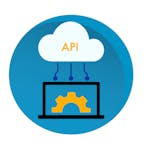Software Engineering Definitions: A to Z Glossary Terms
Interested in software engineering but you keep seeing terms unfamiliar to you? This A-to-Z glossary defines key software engineering terms you need to know.
Software engineering professionals are actively involved in the design, development, testing, and maintenance of software applications. They utilize a wide range of programming languages, frameworks, and tools to create web and desktop applications, build scalable systems, integrate with databases, and collaborate effectively with cross-functional teams. With a strong focus on problem-solving and innovation, software engineers play a vital role in shaping the technological landscape and delivering cutting-edge solutions to meet the needs of modern businesses and users.
This software engineering glossary can be helpful if you want to get familiar with basic terms and advance your understanding of software engineering.
Software Engineering Definitions: A to Z Glossary Terms
Interested in software engineering but you keep seeing terms unfamiliar to you? This A-to-Z glossary defines key software engineering terms you need to know.
Software engineering professionals are actively involved in the design, development, testing, and maintenance of software applications. They utilize a wide range of programming languages, frameworks, and tools to create web and desktop applications, build scalable systems, integrate with databases, and collaborate effectively with cross-functional teams. With a strong focus on problem-solving and innovation, software engineers play a vital role in shaping the technological landscape and delivering cutting-edge solutions to meet the needs of modern businesses and users.
This software engineering glossary can be helpful if you want to get familiar with basic terms and advance your understanding of software engineering.
Software Engineering Terms
Agile
Agile is an iterative and collaborative software development approach emphasizing adaptability, customer feedback, and incremental delivery. It promotes cross-functional teams and continuous improvement throughout the development process.
Bug
A bug is a flaw or defect in software that causes it to behave unexpectedly or produce incorrect results. Bug tracking and fixing are essential parts of software engineering to ensure high-quality products.
Continuous Integration (CI)
Continuous Integration is a software development practice that automatically integrates code changes into a shared repository multiple times daily. It helps identify and address integration issues early in the development process.
Debugging
Debugging is identifying and fixing errors or issues in software code. Developers use various tools and techniques to locate and resolve bugs during software development.
Exception Handling
Exception handling is a programming mechanism to manage and respond to unexpected events or errors during program execution. It allows developers to gracefully handle errors and prevent program crashes.
Functional Testing
Functional testing verifies the application's functions and features to meet the specified requirements. It involves testing individual functions or modules in isolation.
Git
Git is a widely used version control system that tracks changes in source code during software development. It allows multiple developers to collaborate on a project efficiently.
High-Level Language
A high-level language is a more user-friendly programming language closer to a human-readable form. It abstracts low-level machine operations, making it easier for developers to write code.
Integration Testing
Integration testing is a software testing technique that tests the interaction and integration between different components or modules of a software system. It ensures that the integrated components work together as expected.
Jenkins
Jenkins is an open-source automation server used for continuous integration and continuous delivery (CI/CD) pipelines. It automates the building, testing, and deployment of software.
Kanban
Kanban is a project management methodology that visualizes workflow using a board with cards representing tasks. It helps teams track progress and manage work transparently and efficiently.
Low-Level Language
A low-level language is a programming language that closely resembles machine code and is specific to a particular computer architecture. It provides more direct control over hardware resources.
Maintenance
Maintenance in software engineering involves updating, modifying, or enhancing software after its initial release. It includes bug fixes, feature additions, and improvements to keep the software up-to-date and functional.
Node.js
Node.js is an open-source runtime environment that allows developers to run JavaScript code on the server-side. It enables building of scalable and efficient web applications.
Object-Oriented Programming (OOP)
Object-Oriented Programming is a programming paradigm that organizes code into objects, each representing a real-world entity. OOP emphasizes encapsulation, inheritance, and polymorphism.
Pair Programming
Pair programming is a software development technique where two developers work collaboratively on the same code. One person writes the code and reviews it in real time, fostering better code quality and knowledge sharing.
Quality Assurance (QA)
Quality Assurance systematically monitors and evaluates software quality to ensure it meets the desired standards and requirements. QA activities aim to prevent defects and provide high-quality products.
Refactoring
Refactoring is the process of restructuring and improving code without changing its external behavior. It enhances code readability, maintainability, and performance.
Software Development Life Cycle (SDLC)
The Software Development Life Cycle is a structured approach that guides software development from inception to deployment. It typically includes requirements analysis, design, coding, testing, and maintenance.
Test-Driven Development (TDD)
Test-Driven Development is a software development approach where developers write tests before writing the actual code. It ensures that the code meets the expected functionality and improves test coverage.
Usability Testing
Usability testing evaluates the user-friendliness and effectiveness of software by testing it with real users. It helps identify usability issues and improve the overall user experience.
Version Control
Version control is a system that manages changes to source code over time. It allows developers to track and revert to previous versions, collaborate effectively, and manage code repositories.
Waterfall Model
The Waterfall Model is a traditional software development approach where each phase of the SDLC follows a linear sequence. It involves strict planning and documentation before proceeding to the next phase.
Conclusion
Congratulations on completing the A-to-Z glossary of Software Engineering terms! Software engineering is a dynamic and evolving field, and understanding these key concepts will help you navigate the complexities of software development. Whether you are a seasoned developer or a newcomer to the world of coding, this glossary will serve as a valuable resource in your software engineering journey. Happy coding!
Learn in-demand software engineering skills from industry leaders.
Software Development Courses | Java Courses | Coding Courses | Software Testing Courses | Programming Courses | Data Structures & Algorithms Courses | System Design Courses | Android App Development Courses | C++ Courses | Kotlin Courses | TypeScript Courses
 Join a community of over 100 million learners from around the world
Join a community of over 100 million learners from around the world Learn from more than 200 leading universities and industry educators.
Learn from more than 200 leading universities and industry educators. 70% of all learners who have stated a career goal and completed a course report outcomes such as gaining confidence, improving work performance, or selecting a new career path.
70% of all learners who have stated a career goal and completed a course report outcomes such as gaining confidence, improving work performance, or selecting a new career path.- 100% online
- Flexible schedule
- Mobile learning
- Videos and readings from professors at world-renowned universities and industry leaders
- Practice quizzes
Can’t decide what is right for you?
Try the full learning experience for most courses free for 7 days.Register to learn with Coursera’s community of 87 million learners around the world





